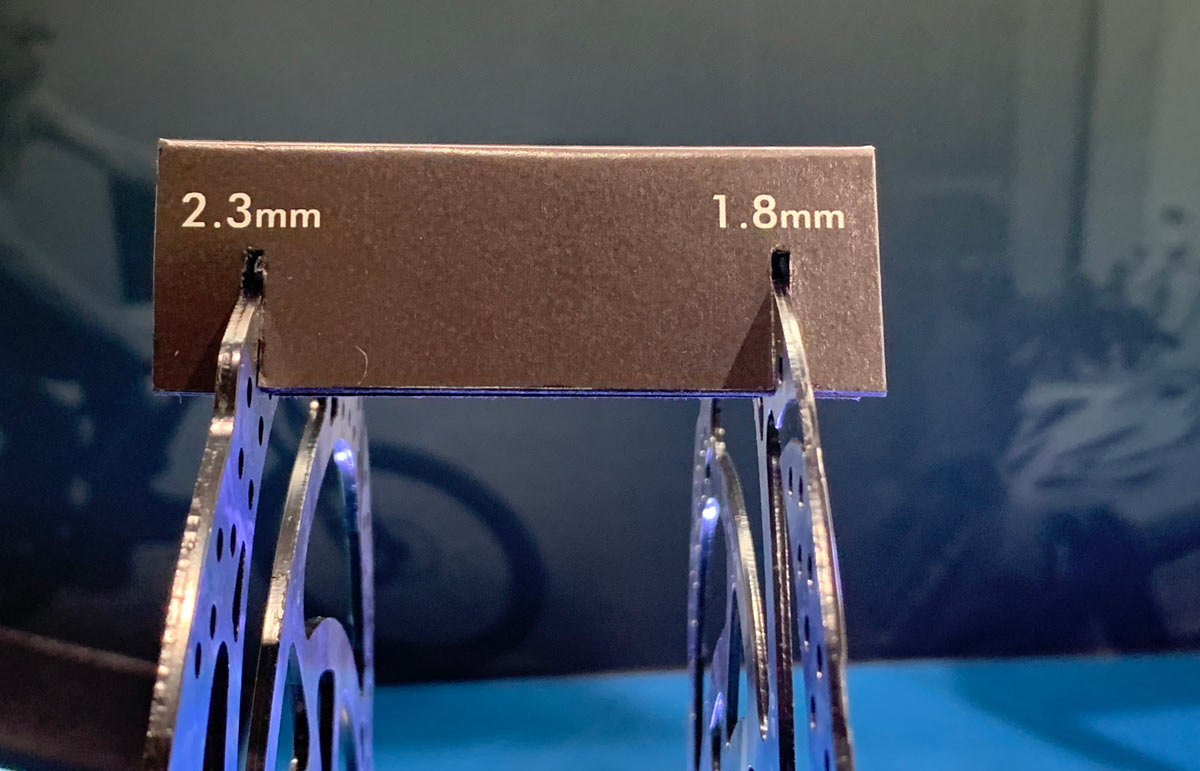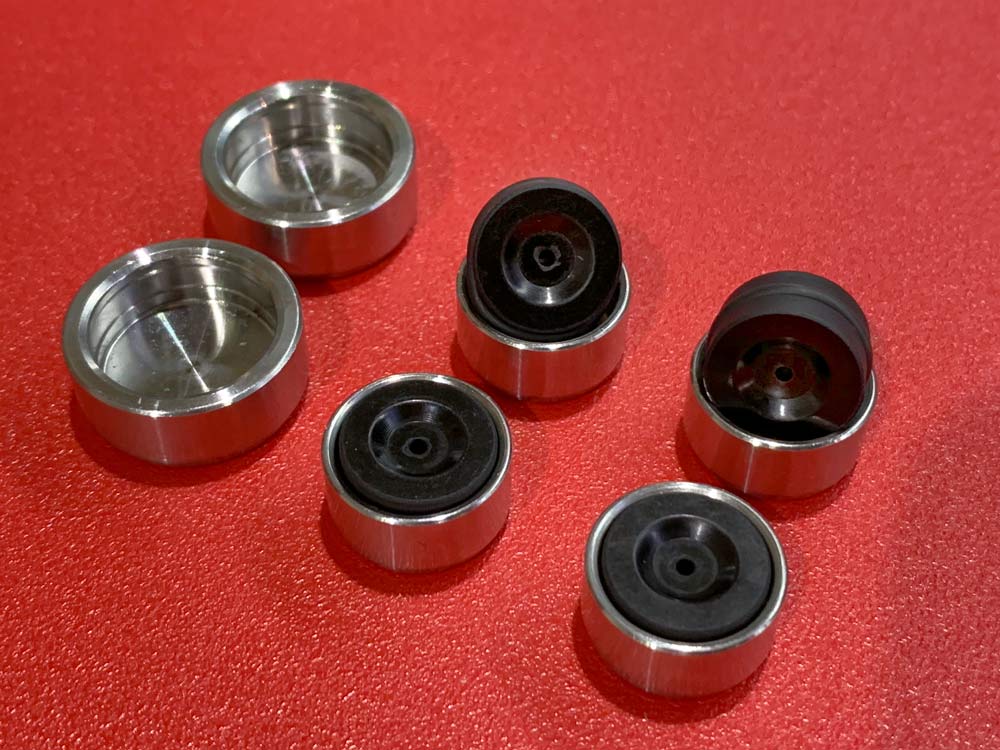With the growing global demand for e-Bikes, there’s been a lot of development tech done specifically for their increased weight and power, but we’re starting to see some of that tech trickle over to “analog” bikes, too. TRP’s G-Spec DH bracelet uses an e-MTB compatible 2.3mm rotor, which has 9% better heat tolerance, and 35% more resistant to deflection. Meaning, it’s stiffer. Compare that to the standard 1.8mm rotor found on regular mountain, road, cyclocross and gravel bikes.
The G-Sped DH brakes were launched last year as a collaboration with Aaron Gwin and retail for $229 per wheel, but you can buy the thicker rotors separately for $39-$49 depending on size. Just keep in mind, regular disc brake calipers may not be able to handle the extra width, either because the opening is too narrow, or the pads won’t retract far enough. or both.
Along with the recently released G-Spec Trail brakes, there’s also a new e-MTB brake specific model that gets their smaller, lighter trail-sized master cylinder and alloy lever for $149/wheel. Rotors sold separately.
One of TRP’s technologies are these hybrid pistons that use stainless outer sections with a composite inside. The design not only saves weight, it acts as a heat barrier to improve heat resistance by 28%. Meaning, less braking friction heat transfers to the brake fluid, which is what could cause brake pump or fade.
Why stainless steel? Stainless has a rougher surface texture of microscopic pores (without being porous), so the hydraulic fluid “sticks” to it making it very smooth and frictionless. They say that’s why stainless refrigerator doors hold onto your fingerprints so well, because the oil from your skin gets into the surface. The benefit is smoother brake feel and quicker, more reliable retraction when you let off the brakes.


